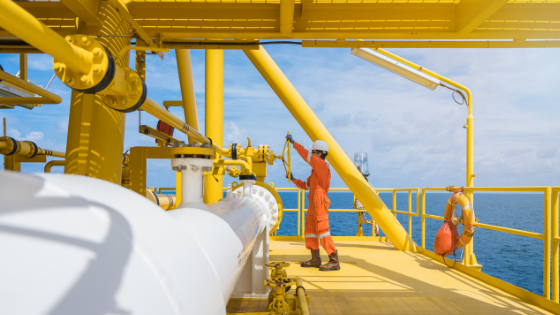Process safety for oil and gas is one of the most basic components of building a safe workplace in these industries.
If you’re not paying attention to your processes, you’re not paying attention to the workers who complete them. And you’re certainly not paying attention to the wellbeing of those workers.
Here are four ways to take control of your process safety and make sure your oil and gas employees go home safe and sound every day.
Maintain Basic Safety Measures
The most basic element of process safety is to institute basic safety measures. In fact, many common workplace hazards can be avoided with good housekeeping.
For example, slips, trips, and falls can often be avoided by keeping your workplace clean. Always make sure that walkways are clear of debris. Equipment and tools should always be put away when they’re not in use. Any spills should be cleaned up right away.
Many work-related injuries, such as eye or face injuries, can be avoided with personal protective equipment (PPE), including glasses and helmets, so always make sure your employees have the appropriate safety gear.
Take Control of Your Data
Part of taking control of your workplace is taking control of your data. For that, you’ll need safety software and document control.
Think about how many teams make up your organization. Now think about how many documents each individual team produces. Multiply that by the number of teams, the number of jobs each team completes, and add an extra ream of documents whenever teams need to work together.
That leaves you with a heap of documents and thousands of pieces of information. Without the right safety management system, crucial data will get lost in the shuffle.
So it’s worth your while to invest in a good document management system. That way, it’s easy to take a bird’s eye view of what’s going on and keep track of essential data all in one place.
Create a Dialogue with Your Workers
As you keep an eye on the numbers, don’t forget to pay attention to the human element.
Your workers are the backbone of your oil and gas company. They’re also the most likely candidates for hazard-related injuries. And since they’re on the front lines, they’re also best equipped to address safety issues as they arise.
So, it’s vital that you create a healthy workplace safety culture with your workers.
For starters, your workers should always be clear on their role in keeping your workplace safe. They should know what your procedures are and what to do if they spot a problem.
Beyond that, your workers should also be confident that you’ll address a problem if they spot it. Otherwise, they have no reason to mention safety problems. What’s the point? Nothing will change whether they mention it or not.
Always Look Forward
Finally, you should always be looking forward, not back.
It sounds obvious, but it’s a critical difference in your safety approach. Most companies document the time since their last incident. Instead, you should be able to state how many accidents occurred over a certain period.
If you can do that, it’s easier for you to figure out what caused those incidents – and what you can do to keep your workers safe in the future.
Stronger Process Safety for Oil and Gas
Process safety for oil and gas is important, whether it be during the crude oil inspection process or during rig-related work. But it’s still just one small part of creating a safe working environment for your employees.
If you’re still figuring out how to address everything else, we can help you bridge the gap. We offer comprehensive safety solutions to companies just like you. Learn more about our oil and gas industry solutions today to find out how we can help.
